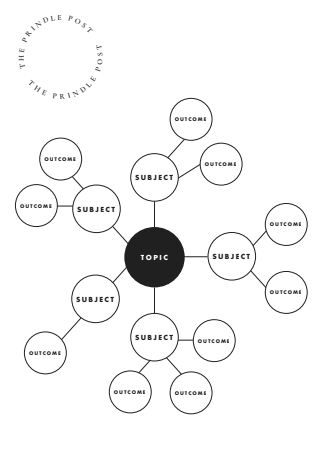How To Create and Use a Stakeholder Map
Kara Jedele
What is a Stakeholder Map?
A stakeholder map is a tool to track the development and complexity of a moral dilemma. Ethics education is valuable because it challenges you to dig into all different sides of an issue. A stakeholder map will help guide you through that process. It works best as a simple web. Start a stakeholder map with the topic in the middle, branching off with subjects that are affected by the topic, then branching potential outcomes off the subjects. Here is a template of a stakeholder map. Notice that a subject can have one or more outcomes.

How do I use a stakeholder map?
First, you just need a piece of paper. As you work through a Prindle Post print edition article, you’ll be prompted to start your stakeholder map and you can continue adding to it as you read. Decide what to put in the topic portion of the map. You might want the topic to be a person or group of people such as “high school students” or “women legislators.” Or, the topic might be an idea, such as “filibusters” or “strategic voting.” Next, start brainstorming subjects that are affected by the topic based on your own background knowledge and ideas presented in the article. We recommend starting the stakeholder map as a whole class activity to make sure everyone is on the same page, and then continuing to work alone or in small groups for the remainder of the article. This process will help you tease out the depth of your moral reasoning and understand the scope of the issue more fully by the end of the lesson.

